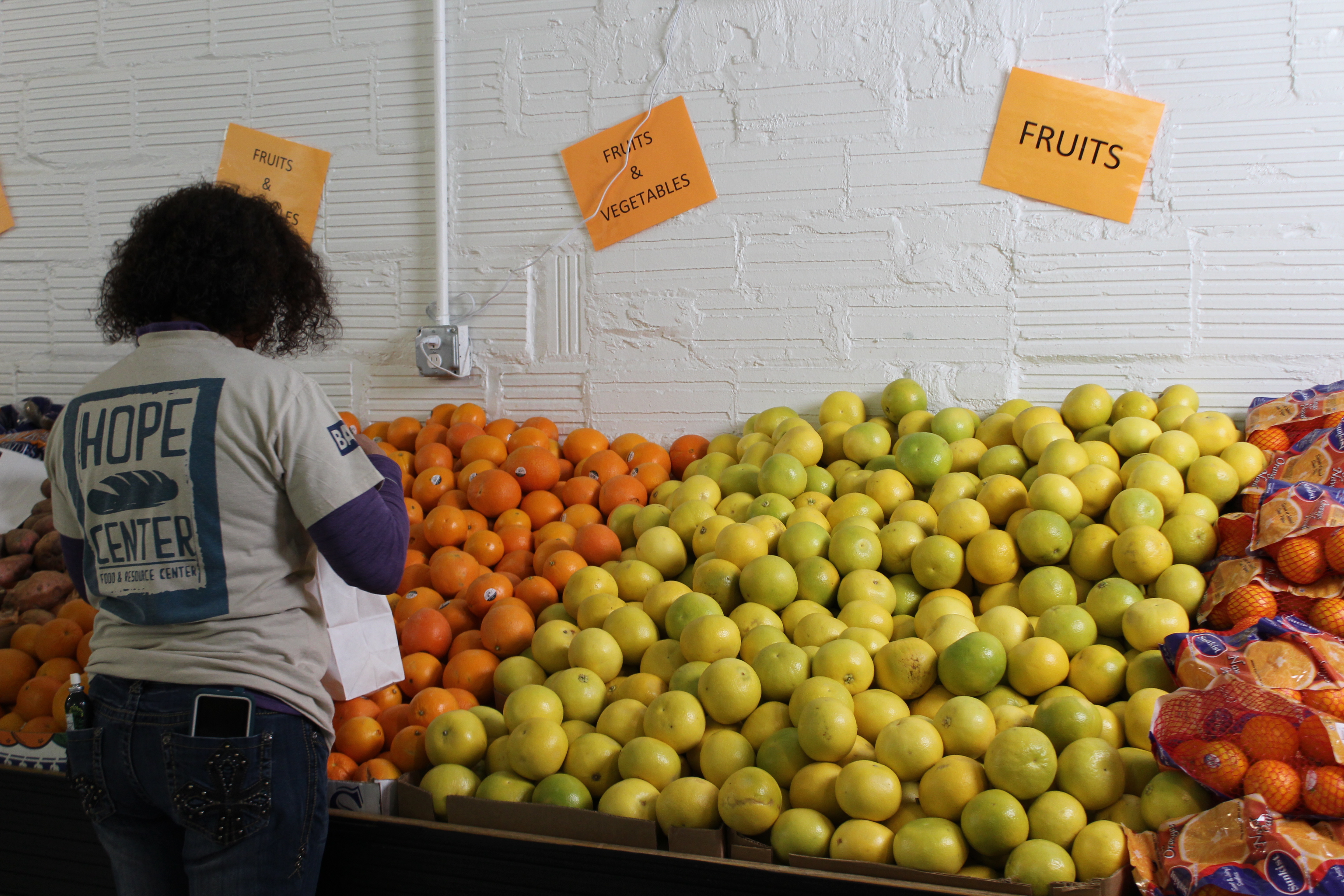
Source: Regional Food Bank of Oklahoma
Collective impact is often defined as an “intentional way of working together and sharing information for the purpose of solving a complex problem.” In our state of Oklahoma, numerous organizations share the goal of improving health outcomes, and no single organization can or should bear this weight on its own. Collective impact is necessary to achieve outcomes with limited budgets and staffing . By maintaining strong working relationships with key stakeholders, organizations can complement rather than duplicate each others’ work toward similar goals.
The Oklahoma State Department of Health (OSDH) was providing technical assistance and training to local-level Tobacco Settlement Endowment Trust (TSET) Healthy Living Program grantees working on various wellness efforts. One such effort was a partnership with food assistance programs to create policies and practices that increase access to nutritious options –— a strategy that was new to the grantees. To help them succeed, OSDH and TSET formed a workgroup with relevant partners, including one of our state’s two food banks. In the workgroup’s first meeting, OSDH and TSET shared the work grantees would be doing and the group discussed the support tools that would need to be created or collected to support it.
When it was mentioned that grantees would be approaching food pantries about nutrition policies, the Regional Food Bank of Oklahoma told them that the organization had a nutrition policy program well underway, which had been heavily researched, piloted, and planned. The existing program, Healthy Pantry Certification Program, supports the Regional Food Bank’s food pantry network using the choice model. In addition to providing education on the importance of consistent access to healthy food, Healthy Pantry Certification offers tools and supportive services to help food pantries establish an individualized pantry nutrition policy, increase distribution of nutritious foods, create a food pantry environment that encourages eating in support of healthy lifestyles, and connect to community organizations and individuals that provide nutrition and health services.
Food pantries must meet specific program requirements to receive certification. Once they are met, certified Healthy Pantries are tracked on the Regional Food Bank’s “Get-Help” page, where families and individuals can find healthy food assistance, partnering health care providers wanting to refer patients at risk of diet related chronic disease to a pantry that guarantees sustainable access to healthy food, nutrition education, and an environment that encourages healthy choices. With this system already in place, there was concern that multiple, disconnected nutrition policy approaches within the food pantry network might cause confusion, hinder the program’s progress and goals, and unnecessarily duplicate efforts.

Source: Regional Food Bank of Oklahoma
Although the first meeting was no doubt awkward, it created an opportunity for us to collaborate and identify specific ways the grantees could support and supplement the Regional Food Bank’s work. One example was for grantees to promote healthier food donations to pantries. This is a sensitive topic, as food pantry managers do not want to seem ungrateful for the donations they receive, but also want to provide food that does not exacerbate the chronic health conditions their guests may face.
Public health professionals have a lot on their plates, and no one agency or organization can solve everything alone. Imagine each public health partner as the holder of unique pockets of information, such as expertise on individual or community needs, data sources, successful programming, or funding opportunities. Information that may have little use to one organization could be a catalyst for another. Having a forum or mechanism to share information with other key stakeholders is critical to achieving collective impact. Before this meeting, our two agencies were not fully aware of each others’ efforts to improve nutrition practices and policy in the charitable food system. Through an open and honest conversation, we were able to find common ground and work together seamlessly as partners.
So where do you begin?
Start by knowing who your partners are. Make a list of who else is working in a similar space as you.
Meet with a partner to learn about their program, talk about yours, and ask about others working in the space. If you find that there could be some competing priorities, find ways to instead support each others’ initiatives. Odds are, you are both working toward the same outcome.
Think outside of the box and discuss the challenges your program has faced that the other program may be able to help tackle. Making these connections needs to be intentional, but does not need to take a lot of time. We are all in this together and by working together, we can dovetail efforts and have a greater collective impact.
This blog post was authored by Lauran Larson, MPS, Oklahoma State Department of Health; and Keeley White, MPH, Regional Food Bank of Oklahoma. Both are honorees of de Beaumont’s 40 Under 40 in Public Health.




